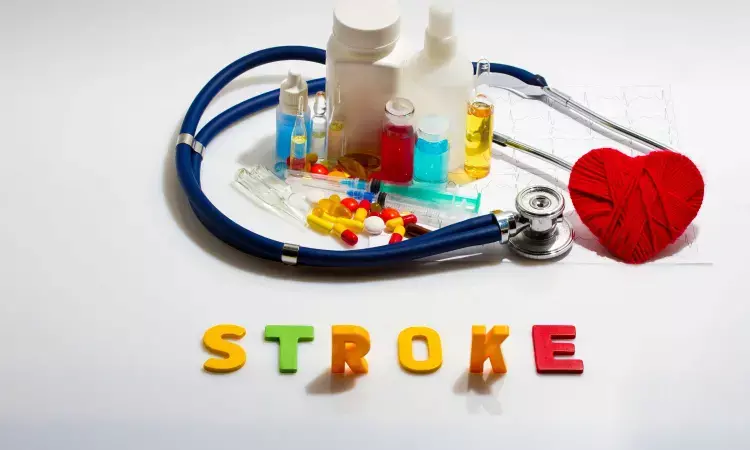- Home
- Medical news & Guidelines
- Anesthesiology
- Cardiology and CTVS
- Critical Care
- Dentistry
- Dermatology
- Diabetes and Endocrinology
- ENT
- Gastroenterology
- Medicine
- Nephrology
- Neurology
- Obstretics-Gynaecology
- Oncology
- Ophthalmology
- Orthopaedics
- Pediatrics-Neonatology
- Psychiatry
- Pulmonology
- Radiology
- Surgery
- Urology
- Laboratory Medicine
- Diet
- Nursing
- Paramedical
- Physiotherapy
- Health news
- Fact Check
- Bone Health Fact Check
- Brain Health Fact Check
- Cancer Related Fact Check
- Child Care Fact Check
- Dental and oral health fact check
- Diabetes and metabolic health fact check
- Diet and Nutrition Fact Check
- Eye and ENT Care Fact Check
- Fitness fact check
- Gut health fact check
- Heart health fact check
- Kidney health fact check
- Medical education fact check
- Men's health fact check
- Respiratory fact check
- Skin and hair care fact check
- Vaccine and Immunization fact check
- Women's health fact check
- AYUSH
- State News
- Andaman and Nicobar Islands
- Andhra Pradesh
- Arunachal Pradesh
- Assam
- Bihar
- Chandigarh
- Chattisgarh
- Dadra and Nagar Haveli
- Daman and Diu
- Delhi
- Goa
- Gujarat
- Haryana
- Himachal Pradesh
- Jammu & Kashmir
- Jharkhand
- Karnataka
- Kerala
- Ladakh
- Lakshadweep
- Madhya Pradesh
- Maharashtra
- Manipur
- Meghalaya
- Mizoram
- Nagaland
- Odisha
- Puducherry
- Punjab
- Rajasthan
- Sikkim
- Tamil Nadu
- Telangana
- Tripura
- Uttar Pradesh
- Uttrakhand
- West Bengal
- Medical Education
- Industry
Right C7 Neurotomy Enhances Language Recovery in Post-Stroke Aphasia: Study

Researchers have found in a new study that among patients with chronic aphasia following stroke, combining right seventh cervical nerve (C7) neurotomy with intensive speech and language therapy (SLT) led to greater improvements in language function compared to speech and language therapy alone. The study was published in BMJ by Juntao Feng and colleagues.
Aphasia, one of the frequent long-term sequelae of left hemispheric stroke, frequently entraps patients with difficulty in communication years after the insult. The research recruited 50 adults between the ages of 40 and 65 years with greater than a year of aphasia after a single stroke. The results present a new promise for patients who in the past had suboptimal recovery following standard therapy.
The trial was implemented in four centers in mainland China from July 2022 to July 2023. A total of 1,086 post-stroke aphasia patients were screened, and 322 of them were diagnosed with persistent aphasia. Fifty available subjects were randomly assigned in equal numbers to two groups: one received right C7 neurotomy at the intervertebral foramen and subsequent three weeks of intensive SLT, and the control group received merely three weeks of intensive SLT after deferral for one week. Allocation was stratified by treatment centres to account for potential differences between treatment centers. All outcomes were measured by blinded examiners.
The main outcome measure was improvement in scores on the 60-item Boston Naming Test (BNT), which assesses naming capacity (score range 0–60). At one month, the neurotomy plus SLT group improved by a mean of 11.16 points compared with 2.72 points in the control group—a significant difference of 8.51 points (95% CI: 5.31 to 11.71; P<0.001). This benefit was maintained at six months with a group difference of 8.26 points (95% CI: 4.16 to 12.35; P<0.001).
Secondary results were the aphasia quotient on the Western Aphasia Battery. The group that received neurotomy had a mean improvement of 7.06 over the control group at one month (95% CI: 4.41 to 9.72; P<0.001). Participants also showed increased quality of life, better activities of daily living, and less depression symptomatology. Importantly, no serious treatment-related adverse events or long-term adverse effects were reported.
Key Findings
Participants: 50 (25 per group), 40–65 years with aphasia >1 year
Primary Outcome (BNT score at 1 month):
Neurotomy + SLT: +11.16 points
SLT only: +2.72 points
Difference: +8.51 points (95% CI: 5.31 to 11.71; P<0.001)
BNT Score at 6 months:
Sustained improvement with +8.26 point difference (95% CI: 4.16 to 12.35; P<0.001)
Aphasia Quotient (1 month):
Difference: +7.06 points (95% CI: 4.41 to 9.72; P<0.001)
Other Improvements:
Improved daily functioning
Decreased post-stroke depression
Safety
No severe side effects or lasting side effects noted
Right C7 neurotomy with intensive speech and language therapy was significantly more effective for enhancing language function in patients with chronic post-stroke aphasia than SLT alone. The effects lasted for six months without significant side effects, suggesting this combination therapy as a potentially useful method for the management of chronic aphasia.
Reference:
Feng, J., Hu, R., Lyu, M., Ma, X., Li, T., Meng, Y., Qi, W., Li, H., Zhang, Y., Ding, S., Wang, Z., Chen, X., Zheng, J., Fan, Y., Ding, L., Wang, L., Wei, Z., Zhu, X., Guo, M., … Xu, W. (2025). Right C7 neurotomy at the intervertebral foramen plus intensive speech and language therapy versus intensive speech and language therapy alone for chronic post-stroke aphasia: multicentre, randomised controlled trial. BMJ (Clinical Research Ed.), 389, e083605. https://doi.org/10.1136/bmj-2024-083605
Dr Riya Dave has completed dentistry from Gujarat University in 2022. She is a dentist and accomplished medical and scientific writer known for her commitment to bridging the gap between clinical expertise and accessible healthcare information. She has been actively involved in writing blogs related to health and wellness.
Dr Kamal Kant Kohli-MBBS, DTCD- a chest specialist with more than 30 years of practice and a flair for writing clinical articles, Dr Kamal Kant Kohli joined Medical Dialogues as a Chief Editor of Medical News. Besides writing articles, as an editor, he proofreads and verifies all the medical content published on Medical Dialogues including those coming from journals, studies,medical conferences,guidelines etc. Email: drkohli@medicaldialogues.in. Contact no. 011-43720751


